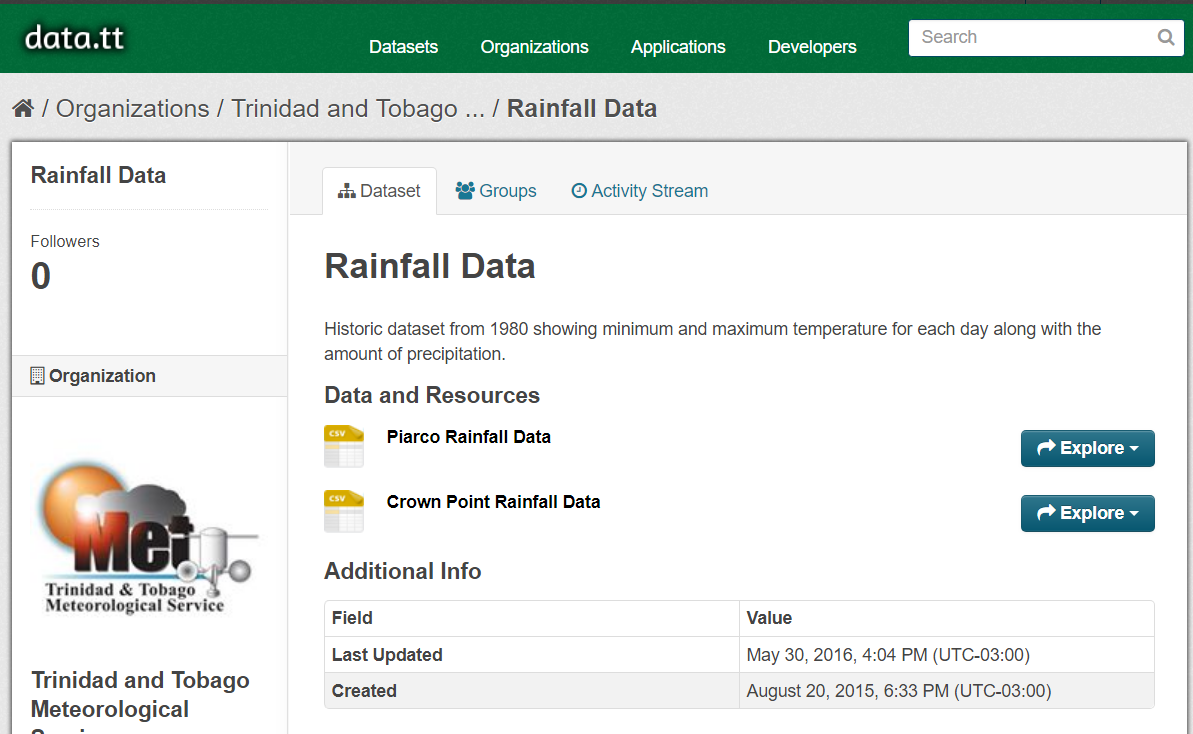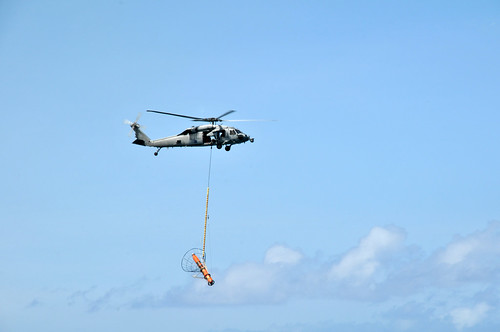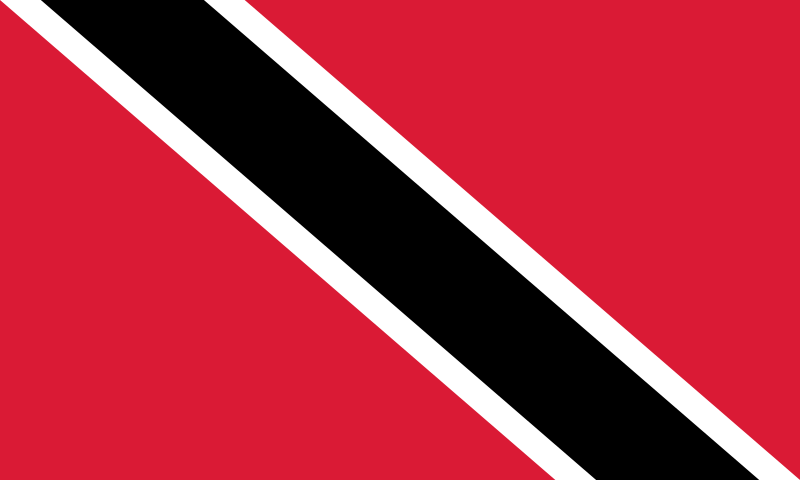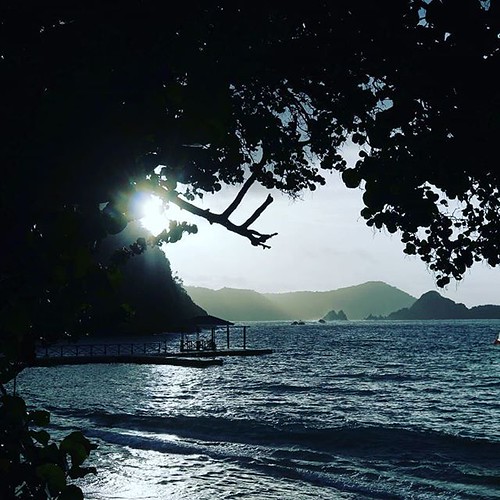
The government of Trinidad and Tobago is launching it’s own investigation into the flooding. I’d be surprised if they found themselves culpable at any level unless political mileage can be had, but to be honest, the present administration has surprised me here and there and I’d welcome a surprise.
Clogged waterways are the obvious issue when it comes to the flooding in Trinidad and Tobago – creating a hazard that leads to disaster. That we need to rein in use of plastics is a corollary; and yet even recycling is not good enough.
Trinidad and Tobago has a problem with illegal dumping, something which I have had to deal with personally on my own land in South Oropouche, something I have dealt with, and something that is seemingly low on the priority list of the Trinidad and Tobago Police Service as they attempt to deal with more violent crimes.
I’d write an argument saying that littering itself is a violence of sorts, the seeding of waterways as time bombs, but it’s hard to make a relevant case for that when people are getting shot just about every day. The indirect seems far removed until communities get flooded out, and even then, it’s indirect.
Lets move beyond the obvious, though.
In Part 1, I wrote about the heart-warming response of the community. In Part 2, I wrote about the government being as overwhelmed as the flood victims. In Part 3, I wrote about proper practices for responding and dealing with logistics in a broad scope. In this part, I’ll write about the more difficult issue of avoidance by addressing causes and the need to mitigate them.
Rainfall

In looking around for whatever rainfall data that could be found, I checked out the Trinidad and Tobago Meteorological Service to take a look at what climate data they have – and rainfall data for Piarco and Crown Point is readily available here, though you’ll need to create a log in. The data extends from 1981 to March of 2018 when accessed on October 29th, 2018. It is really hard to work with to see if there have been any changes.
The CSV data for rainfall published on Data.tt is easier to work with, though it only goes to 2015. By breaking it into decades, then running an average of precipitation as well as a standard deviation on each decade for precipitation… I came up with very similar results, indicating no real increase in rainfall over decades.
That’s strange. Maybe they have other data that isn’t public, but why that would be so boggles the mind.
In the media, there has been constant mention of ‘increased rainfall’. It seems strange that the one geographic point where they publish data doesn’t seem to have that increase.
Where is the data for other parts of the country that get quoted by government offices?
Dredging of Waterways
It’s generally understood that Regional Corporations are supposed to be dredging waterways within their jurisdiction. It hasn’t been happening as often as it should. That’s something anecdotal that gets mentioned in the local media a lot, but there’s no real data to support it.
It’s difficult to have data for things that aren’t done, much less when they weren’t done. Does anyone keep track of that aside from Regional Corporations?
Unplanned Development: Public Lands
One of the main problems of flooding anywhere in Trinidad and Tobago is the unplanned development – we know it as houses simply appearing on private or public lands.
When it comes to public lands, the government is responsible for dealing with squatting, both residential and agriculture. There’s evidence that this is not being done just about everywhere. Residences appear almost randomly throughout the country, which seems to be the reason why the government of Trinidad and Tobago attempts to build and lease houses… which they, through the Housing and Development Corporation (HDC), have trouble collecting money from.
Squatting takes place all over – sometimes on lands that are safe, sometimes on lands that are not.
Real estate prices make agricultural land unattainable for many who would want to participate in agriculture, I know of many skilled farmers looking for agricultural land – but socioeconomically, and legally, leasing land privately comes with it’s own problems.
This leads to squatting on public land for agriculture – because in Trinidad and Tobago, making something illegal isn’t the same as stopping it. Farming on squatted public land is a political issue when it comes to Agriculture because no one wants to take on poor squatting farmers over this, and so the government regularizes it.
Whether right or wrong in an ethical sense is beyond me. Whether it is right or wrong in a matter of public planning to avoid flooding is an issue for The Ministry of Planning’s Town and Country Division, and it’s uncertain that it is an issue for them as far as their mandate.
There is more to the agricultural aspect – it’s addressed in a later section within this article.
Unplanned Development: Private Lands
Land owners have very few tools to stop people from building on their lands other than very heavy handed approaches, or High Court matters that run into 6 figures as a matter of course. You might think you could simply go to the Trinidad and Tobago Police Service and report someone building on your land – and you’d be right, but the Police will not be able to do anything other than tell a landowner that it’s a Civil Matter. After all, the Police are not surveyors, etc.
This works out well for lawyers, and it also clogs up the Court with matters while people continue using land in ways that the landowner cannot stop, that the Ministry of Planning’s Town and Country Division does nothing about, and which affects lands in sometimes unpredictable ways. This includes issues related to flooding and landslides.
So unplanned development on private lands through squatting is an issue – but it’s also an issue when private land owners themselves either, (1) do their own unplanned development or, (2) Allegedly bribe officials to get their plans passed regardless of what will happening about the surroundings as well.
Given how slow the wheels of the Ministry of Planning’s Town and Country Division move, it should be no surprise that people try to lubricate it. Certainly, that would have an effect on assuring quality in Town and Country, but… that, too, is anecdotal and is not something people mention in a public forum very often.
After all, they might need something passed in the future.
Planned Development: Private and Public Lands
Having already mentioned the alleged lubrication of the wheels of the Ministry of Planning’s Town and Country Division in the context of private land owners, we are left with the public through the government of Trinidad and Tobago’s many child corporations, a sometimes toxic spill of acronyms on the natural landscape of Trinidad and Tobago.
The Housing and Development Corporation (HDC) builds houses, and some of these projects have flooded repeatedly. The National Infrastructure Development Company Limited (NIDCO) does other things, such as highways and buildings. The Environmental Management Authority (EMA) of Trinidad and Tobago has been accused of rubber stamping plans more than once. The Ministry of Planning’s Town and Country Planning Division is a black box that allegedly works best when one sticks blue pieces of paper into it. WASA has connected people with water without permission from landowners on properties without Town and Country approval for proper drainage. The list goes on, and it’s hard to understand without a narrative, which I provide in the last section.
Agriculture.
Speaking from my own experience with hands in the soil, and with dealing with significantly more experienced farmers than myself, a farmer is supposed to know his or her land, which means knowing how the water runs and planning for dry season (ponds and irrigation) and wet season (drainage and irrigation). Let’s assume that every farmer understands this – that understanding can only be implemented on the land that they are using and how it immediately impacts them.
Runoff from fertilizers, weedicides, fungicides and insecticides impacts not only the area, but areas further down the waterways – and that, in turn, impacts natural ecosystems that may have actually helped avoid flood conditions in the past.
There’s no real regulation of what fertilizers, weedicides, insecticides and fungicides are used.
A Personal Narrative On Planned Development

I was personally impacted by the Pt. Fortin Highway. The planned road reserve had been through my land for decades, so it was not a surprise when it actually began. The acquisition of my land happened quickly – but payment from NIDCO is still pending after 6 years, where the government has to pay me interest for said lands still. That’s not so much the point here, though.
The project was halted because of allegations of corruption – so it’s hard to say that the incomplete drainage adjacent to the highway on my land and the land of others was going to be addressed or not, but the fact of the matter is that it wasn’t. In fact, there seemed to be little regard for drainage.
 Because of that, when I was recently invited to look over things for the Diego Martin Highway Project that NIDCO has sent out Requests For Proposals (RFPs) on, I took the opportunity to look things over better. I found the document that the Ministry of Works and Transport’s Environmental, Health and Safety Unit prepared and sent to the Environmental Management Authority and was amazed at how horrid a document it seemed to be.
Because of that, when I was recently invited to look over things for the Diego Martin Highway Project that NIDCO has sent out Requests For Proposals (RFPs) on, I took the opportunity to look things over better. I found the document that the Ministry of Works and Transport’s Environmental, Health and Safety Unit prepared and sent to the Environmental Management Authority and was amazed at how horrid a document it seemed to be.
Here’s what I found, and what I said in so many words at a public consultation to assure it went on record. The sections refer to the actual document (and if anyone wants a copy, contact me).
The report:
- does not have a finalized design or budget, which is of great concern: How can we comment on a design that is incomplete, and how can anyone gauge whether it will have a return on investment for the taxpaying community?
- claims that it will improve drainage, which is important in the context of the flooding of October, 2018, and of the previous year post-Brett — but does not demonstrate knowledge of water flow issues from the Diego Martin River and tide information. I’m certain that someone at the Ministry of Works and Transport is trained in Fluid Flow, perhaps they could add to the report?
- That cites rainfall in the area for only 3 years (5.4.1.1.1), but cites wind history for over a decade (5.4.1.1.4). Why is that? And given that there is wide international acceptance related to sea levels rising and we have seen anecdotally increased rainfall since 2014, I suspect that the original plans submitted in 2015 have not been updated with the most recent data. I’m sure that the 100,000+ that have been affected by flooding this year alone might have something to say about neglecting the statistics which have so affected their lives.
- Mentions that it will not involve new crossings of watercourses (4.5) . It does not mention drainage into existing water courses, which will affect flow rates out to the Gulf of Paria, tide permitting. It later says that the limits of the proposed works are, to the West, just before the Western Main Road Bridge over the Diego Martin River. In the same section (5.1), it goes on to say that the limits are preliminary; I imagine they must be because there is likely to be drainage that affects the Diego Martin River itself directly along that Western boundary. This grey area is of concern given tides, occlusion, flooding elsewhere that must flow outward, and so on.Further, in 5.4.1.1.5, the Diego Martin River is mentioned in the topography and acknowledged as an issue with devastating flooding mentioned in 2008 and 2013.
- The population dynamics, Section 5.3, Table 2cites data from 1990 and 2000. My calendar indicates that as of this consultation, these figures are 28 and 38 years out of date respectively. I imagine we might have different numbers now, but lacking scientific data – as this report does – I cannot say. In the report itself, it states that there was a 2.7% decrease in population in the area between 2000 and 2011. Certainly, the area may have matured and stabilized, but there is no real data cited in the report to support the recommendation other than anecdotal evidence which would indicate that there is less need for this project.Cited vehicle registration projections do not seem to scale with local population growth, either, and their inclusion adds confusion instead of clarity within the local area.
- 5.4.1.1.9, Surface Water Quality, refers to a test that has no date. When was the test done? Is it still relevant? By omission, the answer should be ‘no’.
- Noise and air quality studies seem to have neglected the HDC development noted in the map which, were the map updated, would be shown as ‘Victoria Keyes’. Given the nature of Victoria Keyes, a group of 3 towers of 9 story height, it would seem this might be an important site to include in such studies (5.4.1.1.10, 5.4.1.1.11), particularly since mitigation strategies(7.2.1.7, 7.1.2.1.7.1, 7.2.1.7.1.1,7.2.2.2.2, etc.) mentioned will have an inconsequential effect on these towers as they are limited to at most 2 stories. Was the HDC notified about this during the consultation in 2015, did they participate? They are presently denying it.
- The HDC development (Now Victoria Keyes) impacts also will include 2 ponds, waste disposal tanks and other things not noted. Again, was the HDC consulted? They would have had to have been, but there seems to be nothing that indicates such in the report.
- 5.4.2.1.2, Fauna, does not note the orange winged parrots that fly over the highway, among other things, including unverified sightings of piping guan – a critical species – adjacent to Victoria Keys. Orange winged parrots are very hard to miss; they fly over the highway at dusk and at dawn, as do other species. This information, therefore, is in question – after all, it was apparently only done over a period of 1 day in 2015.A day is simply not enough to view local species, much less migratory species which would take at least a year to take into consideration if this were really related to anything about the environment.
- Aside from all of this, the loop to be done adjacent to Victoria Keyes – in this outdated document, ‘HDC Development’ – there are roadworks planned within 200 feet of at least one of the towers and infrastructure, which would imply that, assuming proper roads are being done, heavy equipment would be used that close to the towers and infrastructure that could cause damage to the buildings. In 2017, the media published an estimate of $2.5m cost per unit at Victoria Keyes, which means that a tower would cost approximately $200m – that seems like an unlikely thing that the government would want to damage given the need to reimburse.
If this is an example of how a Trinidad and Tobago government project is run, if it continues without addressing these issues, how can we not expect flooding?
Summary
In all, there is a lot that everyone can do to help avoid the situation. Becoming more aware, which hopefully this article is a part of, is the first step and is not even original – much of what has been written here has been written elsewhere or said elsewhere.
As far as the government of Trinidad and Tobago – certainly, we can be critical of the response to what is classified as a Natural Hazard (flash flooding) and we have seen more than once as a disaster, but are we ready yet to start discussing the preventative measures that the Government is seemingly failing to do through the shell game of government corporations?
Spread the word. Share this, or talk to people you know about it.
The home you save could be your own.

 In
In 






